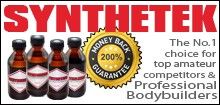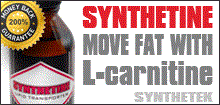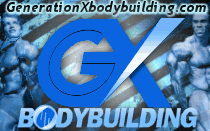- Joined
- Jan 15, 2011
- Messages
- 572
Sensible Training - A Logical Approach to Size and Strength
by Dr. Ken E. Leistner
With all the numerous changes that have taken place in the field of weight training over the years it has never been truer that "the more things change the more they remain the same". Armed with the accurate information collected over the years it is possible for anyone to improve their strength, their muscular endurance (to a certain extent), their cardiovascular endurance, and their appearance (a subjective evaluation) if the interested party is willing to take the brief time necessary to analyze the conditions necessary for inducing muscular growth stimulation.
The requirements haven't changed over the years, and the nonsense put forth by the commercially interested and biased parties hasn't changed either. But most importantly, the irrational approach taken towards training hasn't changed a great deal either, and has prevented the vast majority of weight trainees from reaping even a small portion of the possible benefits made available by the use of the barbell.
Robert Sizer, a former pro-football player, All-American at Richmond University and at one time the most outstanding high school football player in the state of Virginia, was perhaps the first successful athlete in the area to pursue weight training in an attempt to improve his athletic ability at a time that this was believed to make one "musclebound", slow and uncoordinated.
Sizer was an 180lb offensive lineman, that by accounts was stronger and faster than most men weighing 250lbs at the time. At 15 YEARS OF AGE he could squat with 450 lbs (for reps), and bench press 420 lbs.
Sizer trained with a barbell fashioned out of concrete wheels that his father made for him. In the beginning he admitted he didn't really know what he was doing. "All" he did was train hard and brief with heavy weights on the major exercises.
Remarked Sizer:
"Unfortunately, as I became exposed to more people who were involved with training, I left my old methods behind and became bogged down in a progress- stifling method, or more accurately, methods of training...No one showed me how to train; I just went at it like I did everything else, and the hard work on each and every set brought results. But when I saw the other fellows doing things a bit differently, I adopted many of their techniques, not to my benefit".
The point? There are basic considerations one has to take into account when inducing muscular growth stimulation, and this, of course, is the whole point of utilizing weights. Some of the necessary conditions that must be met for optimal results are:
- using heavy movements over a full range of motion - continuing every set of every exercise to a point of momentary but complete muscular failure - using "basic" exercises, i.e, compound movements that work the major muscular structures of the body, like the squat - training at a level of maximum intensity - limiting the amount of work done - providing the necessary requirements for growth to occur - ensuring that the exercise is truly progressive
Much of this is so obvious that it needs no further explanation, but considering the almost unbelievable amount of false information available, without such a basic understanding the trainee will not be able to formulate a program that will bring results in a manner that is proportionate with the effort expended.
The only way to produce maximum possible increases in muscle tissue mass is by the production of maximum power. This can only be done by utilizing exercises that engage as much of the particular mass as is possible, and only when working over a full range of possible motion. And while it is almost impossilbe to engage 100% of the available fibers, much more growth stimulation will occur if the exercise is carried out over as great a range as is possible. This also assists in the development of increased flexibility, as a heavy weight will pull the involved bodyparts into a fully extended position at the beginning of the movement and will also provide "prestretching" of that involved muscle. It is now apparent that the most important requirement for inducing maximum growth is intensity.
Carrying an exercise to the point of momentary but complete failure ensures that one is training at a point of greatest possible intensity (assuming that the trainee is putting forth effort and "not going through the motions" and thus "failing" long before reaching a point of actual muscular failure). There is no way to gauge the amount of effort being put forth unless one goes to the point of failure. That implies, simply, that 100% of momentary possible effort was put forth.
Also, it is only by working this hard that one can engage the maximum possible amount of muscle fibers. And unless this maximum amount of fibers is worked, growth will be retarded, if not impossible. Many trainees fear this. They are afraid of working as hard as is actually required, and thus they often return to their prior methods of training improperly. It is much easire to perform 4 sets of 8 reps of a particular movement than it is to complete one set *correctly*; for example, doing 15 reps in proper form to a point where it is momentarily impossible to move the barbell with the involved bodypart.
I recently had the "pleasure" of training (for only one session, thankfully) with one of the leading bodybuilders in the United States. I convinced him to try "my way" of doing things, and he finally consented. I coaxed him through a set of leg presses, using approximately 300lbs, and he completed 18 reps. This was followed by a set of full squats, using a fairly light weight (approx. 185 lbs), and he terminated the set long before his strength had been taxed. We then did standing presses and chins, and he did manage to go to a point of failure, although he did take momentary "breaks" during the sets to complain that the "weight is just too light to feel so heavy" and other such gems of wisdom.
The result? He called me the next day to tell me that he was very sore but that he was going to return to his prior method of training because "your way is just too hard". He further admitted that he thought that I was correct - trainng to failure, using a weight, any weight that would allow a reasonable number of repetitions, was the proper way to train - but that he preferred an admittedly improper training method because it was "easier". I explained that while the human body could be damaged by doing "too much work," the body's defense mechanisms made it almost impossible to bring about injury by training "too hard. You'll regurgitate or faint before you cause any real damage to the body, *if* you trained even that hard," I said.
"Well, I'll just stick to what I'm doing," he said. "But, hey, thanks for the time you gave me." Indeed. (And I should of course point out that "my way" of training is not really *my* way. I had nothing whatsoever to do with the development of such common sense principles. I've just had the sense to utilize what is rational, correct, and result-producing).
Common sense would indicate that if one is training at the proper level of intensity, an increased amount of work would be neither desirable nor possible. ONE set of 15-20 reps in the full squat, performed with proper form and done until the trainee can no longer rise from the full squat position, will do more for building the strength and size of the involved muscles than any such number of improperly performed sets of any other leg exercises, including the full squat. And how many sets of full squats, done as described, do you think you could perform in a single workout? How many such sets would you *want* to perform? Thus it becomes obvious that the amount of work must be limited.
One also walks a very thin line in inducing muscular growth. You must work hard enough to induce growth, but not so extensively as to deplete a very definite (but unknown) amount of recovery ability. One can train properly in that all exercises are performed in correct style, taken to a point of momentary failure, etc., but if too much work is done, the system will not be able to provide the necessary factors for growth. Yet many trainees train four, five, six and sometimes even more per week.
Athletes who are preparing for a season of activity will express surprise that they progressed little while lifting weights three or four days per week, running distance and sprints on their "off" days and practicing the skills needed for their particular activity an additional two or three times per week. Their ability to recover has been depleted, and until that ability is restored, no amount of additional work will induce muscular increases. Thus training must be limited to no more than three days/week and in some cases only two/week. And for some extreme cases, training once per week will serve to induce maximal amounts of growth.
Why so-called compound movements? Before I actually knew anything about proper training (and this is not to imply that I know even a fraction of what there is to know now), I realized that there was something, an indefinable something, that wasn't "right" about a number of bodybuilders who trained in the gym where I also trained. (This is not to be misconstrued as a criticism of all bodybuilders. Many have a great deal of athletic ability and fine, athletic-appearing physiques.)
One such man was an advanced trainee (in the sense that he had been training a number of years and had won a number of local physique titles). However, he was missing a certain athletic quality, a harmonious look. My brother put the finger on it when he observed, "He looks like a bunch of bodyparts pasted together. He's all there, big and all, but the total picture looks awkward-no grace, no glow, no..." The point had been made.
The human body's muscular structures are such that I was amazed at the first autopsy I witnessed. After reading GRAY'S ANATOMY and seeing a number of anatomy charts, I had assumed that one could discern individual muscles. This isn't the case. They are so interbound and interwoven, it becomes obvious why so many years of medical training are necessary to figure the entire mystery out. Muscles work in conjunction with each other. Furthermore, greatest growth stimulation will come by working the largest muscles in the body. A secondary growth effect occurs when the major muscle masses are worked, and the statement that the "small muscles will take care of themselves if you work the big ones" is true because of this effect. Thus the greatest possible growth will occur if movements are employed that will engage the major muscular structures of the body. (More on the selection of exact exercises, later).
In addition to inducing growth stimulation, other factors are necessary for increasing the amount of muscle tissue mass. These include sleep, nutrition, and a number of psychological variables such as motivation, resistance to pain and "psyching up", amoung others. Each of these factors is important.
Though the term "progressive exercise" has been used as a catchall to describe weight training activities, most trainees rarely make any attempt to actually have progressive and productive workouts. The "theory" is so logical as to be almost ridiculous, yet it is so often, if not always overlooked. If one were to add 5 lbs to the barbell every two or three workouts, or add another repetition, performed in proper style, with the same weight one used in the preceding workout, growth would occur (assuming that all other previously mentioned factors were taken into consideration and those considerations met), as the system would be constantly exposed to an ever-increasing load. This is progression.
Arthur Jones stated that, with curls as the example when it is possible for a trainee to curl 200 lbs in good form *without* body swing, "then his arms will be as large as they need to be for any possible purpose connected with any sport just short of wrestling bears". This sums up progression pretty well.
I am fond of telling doubting trainees that it's just a matter of always adding weight to the bar, adding another repetition, "If you could get to the point where you're squatting 400lbs for 20 reps, stiff-legged deadlifting 400 lbs for 15 reps, curling 200 for 10 reps, pressing 200 for 10 resp, doing 10 dips with 300 lbs around your waist, and chinning with 100 pounds, don't you think you would be big - I mean awfully big? And strong?" Obviously!
Knowing the basic considerations, it is possible to construct a sensible weight-training program, one that will serve almost anyone's purpose. However, to further clarify matters, I will discuss the choice of the actual exercises. Some are more result-producing than others, and some are also less dangerous.
The available equipment should include a barbell, a squat rack (or some type of high stand that can be used to support a barbell), an overhead bar (or pipe) for the purpose of chinning and two pipes, heavy chairs or parallel bars for the purpose of performing parallel bar dips. If more equipment is available, fine; it will add variety to the program. But more equipment is not necessary to build one to his maximum possible size and strength. The best exercises for the major musculature structures of the body are full squats, stiff-legged deadlifts, standing presses, chins with the palms facing you, parallel bar dips, barbell curls, bent- over rowing motions, pullovers on a bench, shrugs and situps. (I include this exercise only as a means of covering the entire body. The abdominals will receive quite enough work during the performance of other exercises.)
A very productive program would look like this:
1) Full Squats - 15-20 reps 2) Pullovers - 10 reps 3) Standing Presses - 10 reps 4) Chins - 10 reps 5) Dips - 12 reps 6) Barbell Curls - 10 reps 7) Shrugs - 15 reps 8) Stiff-Legged Deadlifts - 15 reps
How many sets of each exercise? One. Two. Certainly never more than three, and if you are working properly, one set of most of these exercises should be more than enough for anyone. Why are these exercises chosen as opposed to some others? Very frankly, personal preference
There are no bench presses recommended. Contrary to popular belief the bench press is not a very good exercise for the development of the pectoral muscles. It is fairly good for the development of the anterior deltoid and triceps, but the standing press develops these muscles as well or better (better being defined as more quickly, more directly, with the production of more power or work during an actual repetition of the exercise), as does the parallel bar dip. However, if you care to do bench presses or presses behind the neck in a standing position, feel free to do so. Perhaps you can alternate pressing movements every few weeks, every few workouts, every other workout. You will never suffer from lack of variety.
Why chins with palms facing (curl grip)? While some prefer chins to a behind-the-neck position with a palms-pronated grip, the curl grip gives a higher order of work to the biceps and a greater range of movement to the latissimus muscles. Why stiff-legged deadlifts as opposed to regular deadlifts or cleans? Again, substitute the regular deadlift on occasion, but bear in mind that the stiff-legged deadlift gives the spinal erectors and biceps femoris more direct work than the regular deadlift. The "power clean", while valuable for some purposes, is not necessary for the development of the muscles in question, and due to the speed of movement it places unnecessary demands on the connective tissue of the involved bodyparts.
Obviously there is room for deviation in the choice of exercises. One can at times substitute one pressing movement for another, use dumbbells instead of a barbell, etc. However, the basic routine should be utilized with little alteration, as all the major muscular structures of the body will receive maximal growth stimulation (and if previously mentioned points are taken into consideration).
How often should one train with this program? A maximum of three times weekly. For some, two sessions a week will provide the necessary stimulation without exceeding the recovery ability. Perhaps three workouts one week, two the following week. It is expected that the intelligent individual will be able to discern for himself what is necessary. (It does constantly amaze me, though, how many persons, "intelligent" in other areas, successful in their professions, are helpless in approaching their training and yet are perfectly willing to pursue a course that is unproductive for years). Any time that progress is not forthcoming analyze your approach and if any changes need to be made, it will probably along the lines of reducing the amount of work being done.
If the precepts put forth here seem simple, it is only because they are. Complexly so. Unfortunately, most trainees do not want to hear the simple truth. They feel safer looking endlessly for secrets, miracle potions - almost anything other than admitting that they are not willing to work *hard* enough for the results they desire (a rather common condition actually, but one most often denied).
An example? I was in a very well equipped athletic training center in Minnesota a few months ago and was approached by a young man of approximately 25 years of age. After speaking with him for a few moments, I recalled that I had instructed him in the use of proper exercise style while working with one of the [now defunct] World Football League teams. This athlete had been an outstanding player at a small Midwestern college but had been released by the professional club. We spoke:
"I haven't really been doing too well lately. I want my arms to be bigger," he said. I noticed that they were fairly large already and remarked that perhaps they were as big as they would ever get, in muscular condition, at his present bodyweight. "Well they were once alot bigger."
He told me that he weighed approximately 25 lbs more at that time than he did presently. I pointed this out and told him that his arms had been larger then, as had the rest of his muscular structures.
"But I was fat at that weight," he said. I repeated that perhaps his arms were as large as they were going to be in muscular condition, considering his height, and other hereditary factors, length of muscle, etc. "I won't accept that. They have to get bigger!" As it was, he refused to train his legs and lower back as "I think those parts are already big enough." This was a well-educated young man who had "been around" was doing graduate work in a related field (related to weight training) and yet displayed a somewhat less than rationale attitude to his training.
One more example? A former lacrosse and football player who had been, a number of years prior to our conversation, moderately successful in physique competition and, when initially beginning his weight training activities fairly strong (as evidenced by a bench press of a single rep of close to 400lbs).
"I'm tired of changing my routine every week. There must be some answer," he said. Unfortunately, he trained in a gym with a current Mr. Universe titleholder. "[blank] suggested that I do more chest work." I suggested he stop wasting his time and perhaps attempt a routine very similar to the one outlined above. He agreed and struggled through it, using 150 lbs for 12 squats, 30 lb dumbbells for his pressing and similar weights for the remainder of the routine.
"You mean to tell me that after 10 YEARS of fairly continuous training, that's your limit? You're using 1/4 the weight you used 8 years ago." I was incredulous.
"I know I'm having trouble believing it myself." was his response.
"If this is the result of so-called proper training, you ought to let it go and concentrate on becoming a millionaire." He was college-educated, was in possession of two advanced graduate degrees, and highly successful at his chosen profession.
"But Frank [blank, bodybuilder with some titles] told me that I didn't need to do any really heavy movements for development." I merely told him to look at the workout that he had just taken, compare the results of his efforts over the previous 10 years of training, and evaluate the validity of his method. "Well, I don't know. If I could just win one contest it would have been worthwhile".
Rational? What is too high a price to pay? It wouldn't be as absurd as it is if all of the wasted effort wasn't totally unnecessary. As Bob Sizer remarked:
"If I would have know what proper training consisted of, if someone would have been there to show me, I would have taken everything to failure, would have done a few basic exercises and probably would still be playing football. Even at my age." He smiled.
It's for Bob Sizer and the many people like him that this article was written.
by Dr. Ken E. Leistner
With all the numerous changes that have taken place in the field of weight training over the years it has never been truer that "the more things change the more they remain the same". Armed with the accurate information collected over the years it is possible for anyone to improve their strength, their muscular endurance (to a certain extent), their cardiovascular endurance, and their appearance (a subjective evaluation) if the interested party is willing to take the brief time necessary to analyze the conditions necessary for inducing muscular growth stimulation.
The requirements haven't changed over the years, and the nonsense put forth by the commercially interested and biased parties hasn't changed either. But most importantly, the irrational approach taken towards training hasn't changed a great deal either, and has prevented the vast majority of weight trainees from reaping even a small portion of the possible benefits made available by the use of the barbell.
Robert Sizer, a former pro-football player, All-American at Richmond University and at one time the most outstanding high school football player in the state of Virginia, was perhaps the first successful athlete in the area to pursue weight training in an attempt to improve his athletic ability at a time that this was believed to make one "musclebound", slow and uncoordinated.
Sizer was an 180lb offensive lineman, that by accounts was stronger and faster than most men weighing 250lbs at the time. At 15 YEARS OF AGE he could squat with 450 lbs (for reps), and bench press 420 lbs.
Sizer trained with a barbell fashioned out of concrete wheels that his father made for him. In the beginning he admitted he didn't really know what he was doing. "All" he did was train hard and brief with heavy weights on the major exercises.
Remarked Sizer:
"Unfortunately, as I became exposed to more people who were involved with training, I left my old methods behind and became bogged down in a progress- stifling method, or more accurately, methods of training...No one showed me how to train; I just went at it like I did everything else, and the hard work on each and every set brought results. But when I saw the other fellows doing things a bit differently, I adopted many of their techniques, not to my benefit".
The point? There are basic considerations one has to take into account when inducing muscular growth stimulation, and this, of course, is the whole point of utilizing weights. Some of the necessary conditions that must be met for optimal results are:
- using heavy movements over a full range of motion - continuing every set of every exercise to a point of momentary but complete muscular failure - using "basic" exercises, i.e, compound movements that work the major muscular structures of the body, like the squat - training at a level of maximum intensity - limiting the amount of work done - providing the necessary requirements for growth to occur - ensuring that the exercise is truly progressive
Much of this is so obvious that it needs no further explanation, but considering the almost unbelievable amount of false information available, without such a basic understanding the trainee will not be able to formulate a program that will bring results in a manner that is proportionate with the effort expended.
The only way to produce maximum possible increases in muscle tissue mass is by the production of maximum power. This can only be done by utilizing exercises that engage as much of the particular mass as is possible, and only when working over a full range of possible motion. And while it is almost impossilbe to engage 100% of the available fibers, much more growth stimulation will occur if the exercise is carried out over as great a range as is possible. This also assists in the development of increased flexibility, as a heavy weight will pull the involved bodyparts into a fully extended position at the beginning of the movement and will also provide "prestretching" of that involved muscle. It is now apparent that the most important requirement for inducing maximum growth is intensity.
Carrying an exercise to the point of momentary but complete failure ensures that one is training at a point of greatest possible intensity (assuming that the trainee is putting forth effort and "not going through the motions" and thus "failing" long before reaching a point of actual muscular failure). There is no way to gauge the amount of effort being put forth unless one goes to the point of failure. That implies, simply, that 100% of momentary possible effort was put forth.
Also, it is only by working this hard that one can engage the maximum possible amount of muscle fibers. And unless this maximum amount of fibers is worked, growth will be retarded, if not impossible. Many trainees fear this. They are afraid of working as hard as is actually required, and thus they often return to their prior methods of training improperly. It is much easire to perform 4 sets of 8 reps of a particular movement than it is to complete one set *correctly*; for example, doing 15 reps in proper form to a point where it is momentarily impossible to move the barbell with the involved bodypart.
I recently had the "pleasure" of training (for only one session, thankfully) with one of the leading bodybuilders in the United States. I convinced him to try "my way" of doing things, and he finally consented. I coaxed him through a set of leg presses, using approximately 300lbs, and he completed 18 reps. This was followed by a set of full squats, using a fairly light weight (approx. 185 lbs), and he terminated the set long before his strength had been taxed. We then did standing presses and chins, and he did manage to go to a point of failure, although he did take momentary "breaks" during the sets to complain that the "weight is just too light to feel so heavy" and other such gems of wisdom.
The result? He called me the next day to tell me that he was very sore but that he was going to return to his prior method of training because "your way is just too hard". He further admitted that he thought that I was correct - trainng to failure, using a weight, any weight that would allow a reasonable number of repetitions, was the proper way to train - but that he preferred an admittedly improper training method because it was "easier". I explained that while the human body could be damaged by doing "too much work," the body's defense mechanisms made it almost impossible to bring about injury by training "too hard. You'll regurgitate or faint before you cause any real damage to the body, *if* you trained even that hard," I said.
"Well, I'll just stick to what I'm doing," he said. "But, hey, thanks for the time you gave me." Indeed. (And I should of course point out that "my way" of training is not really *my* way. I had nothing whatsoever to do with the development of such common sense principles. I've just had the sense to utilize what is rational, correct, and result-producing).
Common sense would indicate that if one is training at the proper level of intensity, an increased amount of work would be neither desirable nor possible. ONE set of 15-20 reps in the full squat, performed with proper form and done until the trainee can no longer rise from the full squat position, will do more for building the strength and size of the involved muscles than any such number of improperly performed sets of any other leg exercises, including the full squat. And how many sets of full squats, done as described, do you think you could perform in a single workout? How many such sets would you *want* to perform? Thus it becomes obvious that the amount of work must be limited.
One also walks a very thin line in inducing muscular growth. You must work hard enough to induce growth, but not so extensively as to deplete a very definite (but unknown) amount of recovery ability. One can train properly in that all exercises are performed in correct style, taken to a point of momentary failure, etc., but if too much work is done, the system will not be able to provide the necessary factors for growth. Yet many trainees train four, five, six and sometimes even more per week.
Athletes who are preparing for a season of activity will express surprise that they progressed little while lifting weights three or four days per week, running distance and sprints on their "off" days and practicing the skills needed for their particular activity an additional two or three times per week. Their ability to recover has been depleted, and until that ability is restored, no amount of additional work will induce muscular increases. Thus training must be limited to no more than three days/week and in some cases only two/week. And for some extreme cases, training once per week will serve to induce maximal amounts of growth.
Why so-called compound movements? Before I actually knew anything about proper training (and this is not to imply that I know even a fraction of what there is to know now), I realized that there was something, an indefinable something, that wasn't "right" about a number of bodybuilders who trained in the gym where I also trained. (This is not to be misconstrued as a criticism of all bodybuilders. Many have a great deal of athletic ability and fine, athletic-appearing physiques.)
One such man was an advanced trainee (in the sense that he had been training a number of years and had won a number of local physique titles). However, he was missing a certain athletic quality, a harmonious look. My brother put the finger on it when he observed, "He looks like a bunch of bodyparts pasted together. He's all there, big and all, but the total picture looks awkward-no grace, no glow, no..." The point had been made.
The human body's muscular structures are such that I was amazed at the first autopsy I witnessed. After reading GRAY'S ANATOMY and seeing a number of anatomy charts, I had assumed that one could discern individual muscles. This isn't the case. They are so interbound and interwoven, it becomes obvious why so many years of medical training are necessary to figure the entire mystery out. Muscles work in conjunction with each other. Furthermore, greatest growth stimulation will come by working the largest muscles in the body. A secondary growth effect occurs when the major muscle masses are worked, and the statement that the "small muscles will take care of themselves if you work the big ones" is true because of this effect. Thus the greatest possible growth will occur if movements are employed that will engage the major muscular structures of the body. (More on the selection of exact exercises, later).
In addition to inducing growth stimulation, other factors are necessary for increasing the amount of muscle tissue mass. These include sleep, nutrition, and a number of psychological variables such as motivation, resistance to pain and "psyching up", amoung others. Each of these factors is important.
Though the term "progressive exercise" has been used as a catchall to describe weight training activities, most trainees rarely make any attempt to actually have progressive and productive workouts. The "theory" is so logical as to be almost ridiculous, yet it is so often, if not always overlooked. If one were to add 5 lbs to the barbell every two or three workouts, or add another repetition, performed in proper style, with the same weight one used in the preceding workout, growth would occur (assuming that all other previously mentioned factors were taken into consideration and those considerations met), as the system would be constantly exposed to an ever-increasing load. This is progression.
Arthur Jones stated that, with curls as the example when it is possible for a trainee to curl 200 lbs in good form *without* body swing, "then his arms will be as large as they need to be for any possible purpose connected with any sport just short of wrestling bears". This sums up progression pretty well.
I am fond of telling doubting trainees that it's just a matter of always adding weight to the bar, adding another repetition, "If you could get to the point where you're squatting 400lbs for 20 reps, stiff-legged deadlifting 400 lbs for 15 reps, curling 200 for 10 reps, pressing 200 for 10 resp, doing 10 dips with 300 lbs around your waist, and chinning with 100 pounds, don't you think you would be big - I mean awfully big? And strong?" Obviously!
Knowing the basic considerations, it is possible to construct a sensible weight-training program, one that will serve almost anyone's purpose. However, to further clarify matters, I will discuss the choice of the actual exercises. Some are more result-producing than others, and some are also less dangerous.
The available equipment should include a barbell, a squat rack (or some type of high stand that can be used to support a barbell), an overhead bar (or pipe) for the purpose of chinning and two pipes, heavy chairs or parallel bars for the purpose of performing parallel bar dips. If more equipment is available, fine; it will add variety to the program. But more equipment is not necessary to build one to his maximum possible size and strength. The best exercises for the major musculature structures of the body are full squats, stiff-legged deadlifts, standing presses, chins with the palms facing you, parallel bar dips, barbell curls, bent- over rowing motions, pullovers on a bench, shrugs and situps. (I include this exercise only as a means of covering the entire body. The abdominals will receive quite enough work during the performance of other exercises.)
A very productive program would look like this:
1) Full Squats - 15-20 reps 2) Pullovers - 10 reps 3) Standing Presses - 10 reps 4) Chins - 10 reps 5) Dips - 12 reps 6) Barbell Curls - 10 reps 7) Shrugs - 15 reps 8) Stiff-Legged Deadlifts - 15 reps
How many sets of each exercise? One. Two. Certainly never more than three, and if you are working properly, one set of most of these exercises should be more than enough for anyone. Why are these exercises chosen as opposed to some others? Very frankly, personal preference
There are no bench presses recommended. Contrary to popular belief the bench press is not a very good exercise for the development of the pectoral muscles. It is fairly good for the development of the anterior deltoid and triceps, but the standing press develops these muscles as well or better (better being defined as more quickly, more directly, with the production of more power or work during an actual repetition of the exercise), as does the parallel bar dip. However, if you care to do bench presses or presses behind the neck in a standing position, feel free to do so. Perhaps you can alternate pressing movements every few weeks, every few workouts, every other workout. You will never suffer from lack of variety.
Why chins with palms facing (curl grip)? While some prefer chins to a behind-the-neck position with a palms-pronated grip, the curl grip gives a higher order of work to the biceps and a greater range of movement to the latissimus muscles. Why stiff-legged deadlifts as opposed to regular deadlifts or cleans? Again, substitute the regular deadlift on occasion, but bear in mind that the stiff-legged deadlift gives the spinal erectors and biceps femoris more direct work than the regular deadlift. The "power clean", while valuable for some purposes, is not necessary for the development of the muscles in question, and due to the speed of movement it places unnecessary demands on the connective tissue of the involved bodyparts.
Obviously there is room for deviation in the choice of exercises. One can at times substitute one pressing movement for another, use dumbbells instead of a barbell, etc. However, the basic routine should be utilized with little alteration, as all the major muscular structures of the body will receive maximal growth stimulation (and if previously mentioned points are taken into consideration).
How often should one train with this program? A maximum of three times weekly. For some, two sessions a week will provide the necessary stimulation without exceeding the recovery ability. Perhaps three workouts one week, two the following week. It is expected that the intelligent individual will be able to discern for himself what is necessary. (It does constantly amaze me, though, how many persons, "intelligent" in other areas, successful in their professions, are helpless in approaching their training and yet are perfectly willing to pursue a course that is unproductive for years). Any time that progress is not forthcoming analyze your approach and if any changes need to be made, it will probably along the lines of reducing the amount of work being done.
If the precepts put forth here seem simple, it is only because they are. Complexly so. Unfortunately, most trainees do not want to hear the simple truth. They feel safer looking endlessly for secrets, miracle potions - almost anything other than admitting that they are not willing to work *hard* enough for the results they desire (a rather common condition actually, but one most often denied).
An example? I was in a very well equipped athletic training center in Minnesota a few months ago and was approached by a young man of approximately 25 years of age. After speaking with him for a few moments, I recalled that I had instructed him in the use of proper exercise style while working with one of the [now defunct] World Football League teams. This athlete had been an outstanding player at a small Midwestern college but had been released by the professional club. We spoke:
"I haven't really been doing too well lately. I want my arms to be bigger," he said. I noticed that they were fairly large already and remarked that perhaps they were as big as they would ever get, in muscular condition, at his present bodyweight. "Well they were once alot bigger."
He told me that he weighed approximately 25 lbs more at that time than he did presently. I pointed this out and told him that his arms had been larger then, as had the rest of his muscular structures.
"But I was fat at that weight," he said. I repeated that perhaps his arms were as large as they were going to be in muscular condition, considering his height, and other hereditary factors, length of muscle, etc. "I won't accept that. They have to get bigger!" As it was, he refused to train his legs and lower back as "I think those parts are already big enough." This was a well-educated young man who had "been around" was doing graduate work in a related field (related to weight training) and yet displayed a somewhat less than rationale attitude to his training.
One more example? A former lacrosse and football player who had been, a number of years prior to our conversation, moderately successful in physique competition and, when initially beginning his weight training activities fairly strong (as evidenced by a bench press of a single rep of close to 400lbs).
"I'm tired of changing my routine every week. There must be some answer," he said. Unfortunately, he trained in a gym with a current Mr. Universe titleholder. "[blank] suggested that I do more chest work." I suggested he stop wasting his time and perhaps attempt a routine very similar to the one outlined above. He agreed and struggled through it, using 150 lbs for 12 squats, 30 lb dumbbells for his pressing and similar weights for the remainder of the routine.
"You mean to tell me that after 10 YEARS of fairly continuous training, that's your limit? You're using 1/4 the weight you used 8 years ago." I was incredulous.
"I know I'm having trouble believing it myself." was his response.
"If this is the result of so-called proper training, you ought to let it go and concentrate on becoming a millionaire." He was college-educated, was in possession of two advanced graduate degrees, and highly successful at his chosen profession.
"But Frank [blank, bodybuilder with some titles] told me that I didn't need to do any really heavy movements for development." I merely told him to look at the workout that he had just taken, compare the results of his efforts over the previous 10 years of training, and evaluate the validity of his method. "Well, I don't know. If I could just win one contest it would have been worthwhile".
Rational? What is too high a price to pay? It wouldn't be as absurd as it is if all of the wasted effort wasn't totally unnecessary. As Bob Sizer remarked:
"If I would have know what proper training consisted of, if someone would have been there to show me, I would have taken everything to failure, would have done a few basic exercises and probably would still be playing football. Even at my age." He smiled.
It's for Bob Sizer and the many people like him that this article was written.

















































































